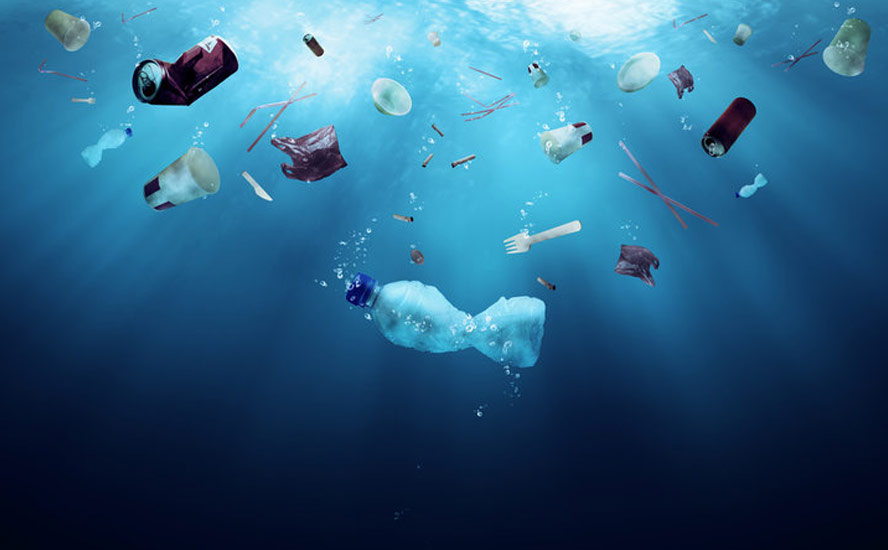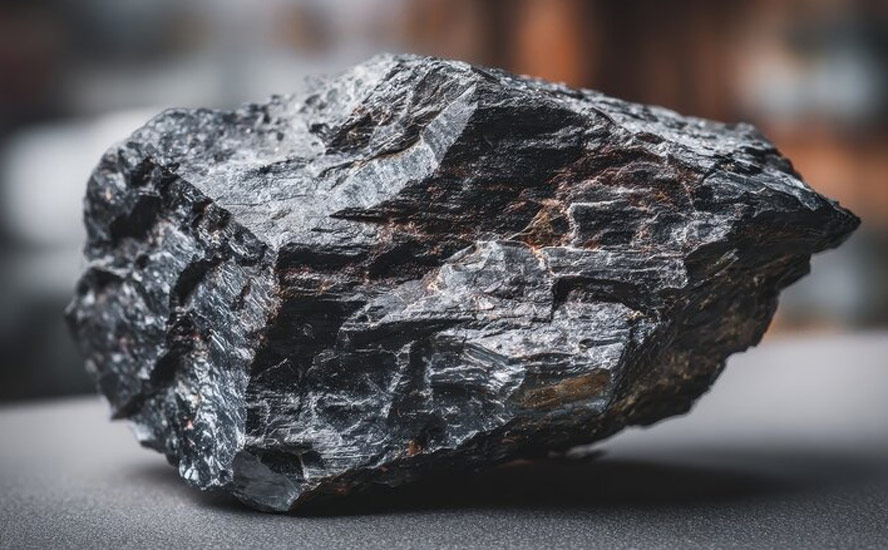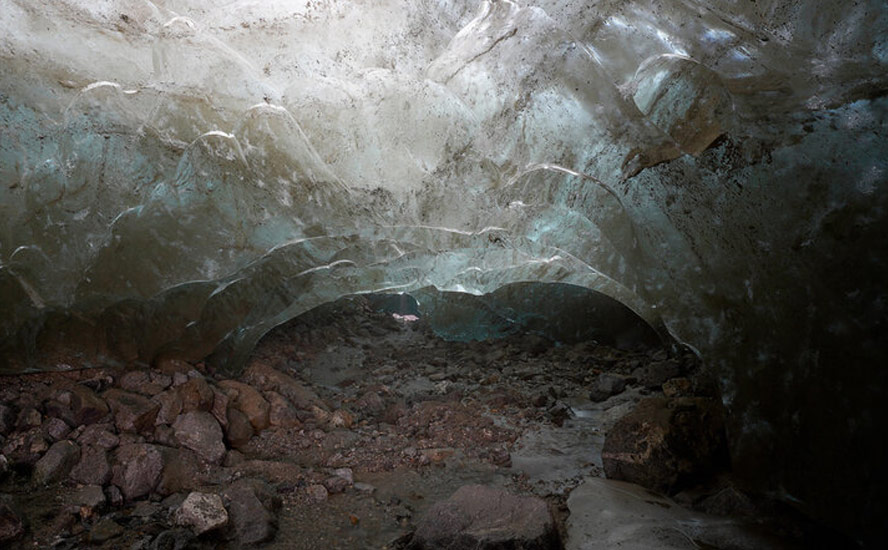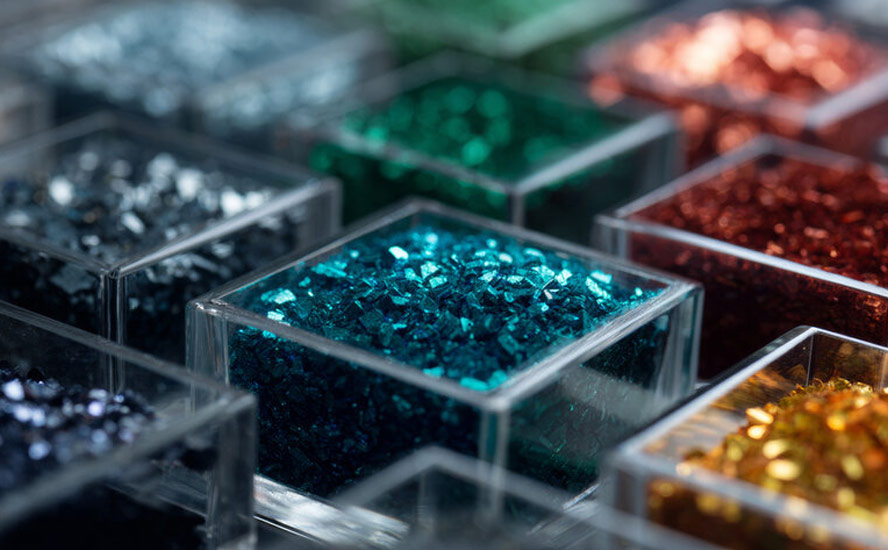Nickel, graphite to benefit from explosive growth in battery storage market
2021.02.10
The challenges most countries are facing right now are daunting. Not only do they need to have a plan for recovering from covid-19, the supply chains that have been interrupted or broken by the virus have to be repaired.
On top of the covid crisis there is a climate crisis, and for lack of a better term, a “technology” crisis. Governments must make funding available for 5G networks so that businesses are not left behind as the world moves more into digitization and automation which require robust internet and cellular infrastructure.
The fossil-fueled based transportation system needs to be electrified, and the switch has to be made from oil, gas and coal-powered power plants to those which run on solar, wind and thorium-produced nuclear energy. If we have any hope of cleaning up the planet, before the point of no return, a massive decarbonization needs to take place.
In a recent report, commodities consultant Wood Mackenzie said an investment of over $1 trillion will be required in key energy transition metals over the next 15 years just to meet the growing needs of decarbonization.
On top of surging demand for metals needed to feed so-called “green infrastructure” programs designed to lift sagging economies out of the pandemic, we have current and emerging structural deficits for a number of metals, that will keep prices buoyant for the foreseeable future.
Over the past year, tight supply is reflected in the rising prices of copper, silver, nickel, zinc and lead, for example.

The only reason we haven’t seen metal prices spike higher, is that demand for them has come off a bit due to the pandemic. When demand is restored, the supply-demand imbalance will be striking.
Two of the most important metals to consider are nickel and graphite — both necessary for the production of lithium-ion batteries utilized in electric vehicles and grid-scale energy storage.
As this article shall prove, a combination of structural deficits, pent-up demand, and infrastructure build-outs, are the perfect storm for nickel and graphite.
Looming battery shortage?
Currently, less than 1% of the world’s vehicles are electric, but by 2030 they are expected to represent about 11% of new car sales, according to commodities consultant Wood Mackenzie.
And while there are a number of obstacles to increasing that percentage of EVs to regular vehicles, including charging station infrastructure and making the sticker prices of electric vehicles affordable to the average person, recent research suggests the battery storage market is growing in leaps and bounds.
According to an analysis by Adamas Intelligence, in 2020 a total of 134.5 gigawatt hours (GWh) of battery capacity was deployed globally into newly sold passenger BEVs, PHEVs and HEVs, an increase of 39.6% compared to 2019. The figure would be up to 40 GWh higher, if additional capacity in sales channels and automaker assembly lines were factored in, said the Toronto-based firm, which tracks demand for EV batteries by chemistry, cell supplier and capacity in over 90 countries.
Yet despite the nearly 40% rise in battery capacity to meet surging demand by automakers for EV battery packs, the industry appears unable to keep pace. In a call to investors last month, Tesla’s CEO Elon Musk said the company does not have enough battery cells to put new models like its Semi truck into production.
“The main reason we have not accelerated new products like the Tesla Semi is that we simply don’t have enough cells built. We could easily go into the production of the Semi, but we don’t have enough cells for it right now,” Musk said on the call, noting the Semi requires five times more cells as a passenger car.
“We’ve been very clear with our cell suppliers, whether it be CATL or Panasonic or LG that we will take as many batteries as they can produce.”
Nickel
Tesla has also expressed concern over whether there will be enough high-purity “Class 1” nickel needed for electric-vehicle batteries.
According to BloombergNEF, demand for Class 1 nickel is expected to out-run supply within five years, fueled by rising consumption by lithium-ion electric vehicle battery suppliers. Nickel’s inroads are due mainly to an industry shift towards “NMC 811” batteries which require eight times the other metals in the battery. (first-version NMC 111 batteries have one part each nickel, cobalt and manganese).
The Nickel Institute informs us that nickel has long been widely used in batteries, most commonly nickel cadmium (NiCd) and in longer-lasting nickel metal hydride (NiMH) rechargeable batteries. The first commercial applications of NiMH batteries came in the mid-1990s, including in the Toyota Prius, camcorders, and eventually, smart phones, laptops and other portable devices. The major advantage of nickel in batteries is it helps to deliver higher energy density and greater storage capacity, at a lower cost.
As the table below shows, nickel is an essential component for the cathodes of many secondary battery designs. (“secondary” refers to batteries that can be recharged and re-used)

Another demand driver for nickel (and other battery metals, like lithium and graphite) is utility-scale energy storage. Researchers at Imperial College London developed a model to determine the lifetime costs of nine electricity storage technologies for 12 applications, between 2015 and 2050. The model predicted that the cost of lithium-ion batteries would fall far enough to beat pumped hydro energy storage – currently the cheapest way to keep energy on ice, as it were.
The finding opens up a potentially lucrative market for lithium and other metals that go into lithium-ion batteries, beyond electronics and EVs. The energy storage market was just 1.4 gigawatts (GW) worldwide in 2017 but it could reach 8.6GW by 2022, according to GTM Research. The US and China are currently the biggest supplies of stored energy and are expected to remain so until 2022, GTM Research said in a 2018 report.
Beyond batteries, lot of nickel will still need to be mined for stainless steel and other uses. The nickel industry’s dilemma is therefore how to keep the traditional market intact, by producing enough nickel pig iron (NPI) and ferronickel from laterites to satisfy existing stainless steel customers, in particular China, while at the same time mining enough nickel sulfides to surf the coming wave of EV battery demand?
In fact the dilemma isn’t getting any easier to overcome; if anything, it’s worsening in the world’s top nickel exporter, Indonesia.
Last year the Southeast Asian nation banned ore exports amid a plan to develop a complete nickel supply chain, meaning raw ore that was previously destined for processing overseas would be “beneficiated” locally. Indonesia wants to become a global hub for EV production, from extraction to processing into metals and chemicals used in batteries, all the way up to building EVs.
Yet there is a serious flaw in this plan, and it relates to the type of nickel deposits found in and around Indonesia.
The trouble with laterites
Nickel deposits come in two forms: sulfide or laterite. About 60% of the world’s known nickel resources are laterites, which tend to be in the southern hemisphere. The remaining 40% are sulfide deposits.
Large-scale sulfide deposits are extremely rare. Historically, most nickel was produced from sulfide ores, including the giant (>10 million tonnes) Sudbury deposits in Ontario, Norilsk in Russia and the Bushveld Complex in South Africa, known for its platinum group elements (PGEs). However, existing sulfide mines are becoming depleted, and nickel miners are having to go to the lower-quality, but more expensive to process, as well as more polluting, nickel laterites such as found in the Philippines, Indonesia and New Caledonia.
Nickel sulfide deposits provide ore for Class 1 nickel users which includes battery manufacturers. These companies purchase the nickel product known as nickel sulfate, derived from high-grade nickel sulfide deposits. It’s important to note that less than half of the world’s nickel is suitable for the biggest growth market – EV batteries.
According to BloombergNEF, demand for Class 1 nickel is expected to out-run supply within five years, fueled by rising consumption by lithium-ion electric vehicle battery suppliers. It’s clear that nickel is facing some growing pains since the industrial metal was burnished by its new-found use in the transportation mode of the future.
Only around 6% of nickel ends up in EV batteries, with 70% of supply going into making stainless steel.
One way to solve the problem, is to mine plentiful laterites and convert the nickel product into nickel sulfate, as the Chinese are planning to do in Indonesia.
There is an obvious advantage in doing so.
Class 1 nickel powder for sulfate production enjoys a large premium over LME nickel prices, but for miners to switch from lower-grade to battery-grade material requires huge investments to upgrade refining and processing facilities.
Reuters has reported on the multi-billion-dollar Chinese-led project to produce battery-grade nickel chemicals, that Indonesia hopes will attract EV manufacturers to the country. At least four high-pressure acid leach (HPAL) plants are currently under construction, led by Chinese stainless steel producers and battery makers.
The country expects to double investment in nickel processing from 2020 to $35 billion in 2035. Jakarta has also signed a $9.8 billion EV battery deal with South Korea’s LG Energy Solution.
While the Indonesian government is happy to accept the foreign investment in its burgeoning EV industry, it is no longer willing to tolerate the environmental degradation that laterite nickel production entails.
Last week, the country announced it will forbid mining companies from dumping mining waste into the ocean, a practice known as deep sea tailings (DST). To clarify: the government hasn’t actually banned DST, but by not issuing new permits, it could delay planned projects and complicate efforts to dispose of waste, Reuters reported. The lengthy wait means land tailings will eventually become “the only option,” a mining company source told the news outlet.
That, in turn, could affect the economics of any new projects — disposing of the tailings on land, in a nation of islands where space is at a premium — will surely throw a wrench into operations and significantly add to their costs per tonne.
Consider: although only one nickel mine in Papua New Guinea is using DST, according to the Nickel Institute, most of the four above-mentioned HPAL plants plan to dump their tailings waste into the sea. Reuters quotes a nickel cost researcher at Wood Mackenzie saying, “It would cost a fortune to switch from one established form of tailings disposal to another method.”
It is also very expensive to process nickel from laterites due to the complex metallurgy.
HPAL – whose performance record has been highly mixed – involves processing ore in a sulfuric acid leach at temperatures up to 270 degrees C and pressures up to 600 psi to extract the nickel and cobalt from the iron-rich ore; the pressure leaching is done in titanium-lined autoclaves.
Counter-current decantation is used to separate the solids and liquids. Separating and purifying the nickel/cobalt solution is done by solvent extraction and electrowinning.
The advantage of HPAL is its ability to process low-grade nickel laterite ores, and recover nickel and cobalt. However, HPAL is unable to process high-magnesium or saprolite ores, it has high maintenance costs due to the sulfuric acid, and it comes with the cost, environmental impact and hassle of disposing of the magnesium sulfate effluent waste.
According to S&P Global Market Intelligence, technical difficulties, high costs and low nickel prices in previous years led to problems at several HPAL projects, including First Quantum Minerals’ Ravensthorpe mine, put into care and maintenance, Sherritt International having to write down CAD$1.723 billion of its Ambatovy mine, and Vale reviewing its Goro operation in New Caledonia.
Of course, we are dealing with a different nickel market these days — one driven by electric vehicle batteries. According to a recent report by Roskill, released by the European Commission’s Joint Research Centre, nickel demand is in for an exponential growth spurt.
Based on the premise that automotive electrification will represent the better part of global nickel demand for the next two decades, the report says demand will shoot from 92,000 tonnes in 2020, to 2.6Mt in 2040, a 28X increase!
“Underpinning this growth is our expectation for EU27 OEMs to increasingly utilize high-nickel cathode chemistries from the mid-to-late 2020s and throughout the 2030s,” the report states.
In fact, the authors anticipate that, unless a sizeable “end of life” (EOL) recycling industry is established, which is a source of materials to produce nickel sulfate, “we expect a supply deficit to form in 2027 and then remain over the rest of the outlook period [to 2040].”
The research firm also believes that the availability of feedstock (ie., nickel sulfide mines), not processing capacity, will be the biggest bottleneck in the nickel sulfate supply chain and is the cause of the market potentially going into a structural deficit after 2027. For Europe, this means finding and securing sources of primary nickel supply outside of the EU’s 27 member countries.
Sulfide cupboard is bare
Where will mining companies look for new nickel sulfide deposits, from which the extraction of high-grade nickel needed for battery chemistries is economically and technically feasible? The pickings are slim.
Decades of under-investment equals few new large-scale greenfield nickel sulfide discoveries. Since 1990, the only large discoveries that have occurred, happened when exploration was going on for other metals.
Only one nickel sulfide deposit has been discovered in the past decade and a half, Nova-Bollinger in Western Australia. Capital expenditures on nickel projects plummeted from $7 billion in 2012 to $2 billion in 2017.
The result of such limited nickel exploration is a very limited pipeline of new projects, especially lower-cost sulfides in geopolitically safe mining jurisdictions. Any junior resource company with a sulfide nickel project will be extremely attractive to potential acquirers.
Graphite
For all the talk about the era of “global electrification” and the race between world powers to secure minerals critical to this process, one raw material that has been flying under the radar is graphite.
Like lithium, graphite is indispensable to the global shift towards electric vehicles; it is the second-largest component in lithium-ion batteries by weight. It is not a substitute for lithium either, since graphite (in spherical form) is in the anode while lithium is used for cathodes.
Spherical graphite can only be produced from flake graphite, a form of natural graphite, upgraded to a high purity level, but its manufacturing process is expensive and wastes up to 70% of the flake graphite feed.
Out of the approximately 1.2 million tonnes of natural graphite processed worldwide each year, only 40% is flake graphite. This figure is far from enough to sustain the growing demand for battery materials.
On average, a hybrid-gasoline electric vehicle (HEV) carries up to 10 kg of graphite, and a plug-in EV has around 70 kg. This means for every 1 million EVs, it would require over 70,000 tonnes of natural graphite.
By some estimates, at least 125 million EVs are expected to be traveling global highways by 2030, nearly 20 times the global EV stock in 2019. That’s more than 8 million tonnes of battery-ready graphite needed in the coming decade.
This does not factor in the relentless growth of consumer electronics, another industry that heavily relies on lithium-ion batteries, as well as future developments in portable tools and energy storage applications.
The global lithium-ion battery industry is expected to grow at a CAGR of 16.4% within the next five years, reaching a value of $94.4 billion by 2025. Sustained demand from developed nations in North America and Europe and expanding Asian markets such as China, India, and South Korea will be the driving forces behind this growth.

According to Benchmark Mineral Intelligence, the flake graphite feedstock required to supply the world’s lithium-ion anode market is projected to reach 1.25 million tonnes per annum by 2025. At this rate, demand would easily outstrip supply in a few years.
Supply chain vulnerability
The global supply chain for graphite is severely vulnerable to disruptions due to the near “monopolistic” nature of the market.
At present, China is by far the largest graphite supplier, producing around 60% of the world’s flake graphite, followed by Mozambique and Brazil. Other high-profile nations that also produce graphite include Canada, India and Russia.
In the US, arguably China’s biggest economic rival and a main driver of the future EV movement, there is currently no graphite being mined on American soil. The lack of a domestic source meant that US manufacturers had to import roughly 40,000 tonnes of graphite material during 2018, rising to 58,000 tonnes in 2019.
This kind of dependence on foreign suppliers is one of the primary reasons why the United States Geological Survey (USGS) included graphite on its list of 35 minerals considered “critical” to the nation (graphite and cobalt are the top two non-rare earths on the USGS list of mineral commodities at risk for supply disruptions). Many of these are overwhelmingly produced by one nation: China.
In 2020 the US imported a third of its natural graphite from China, with the balance of shipments coming from Canada and Mexico.
For years, the reliance on China for resources had been an “elephant in the room” for Western policymakers, but the executive order issued by President Donald Trump meant that the US had taken steps to rectify that. And now, the Biden administration and like-minded leaders around the world will make their moves to address this supply chain vulnerability.
Another key factor for listing graphite as a critical mineral is US domestic demand. The USGS sees a major spike in demand once Tesla’s Gigafactory in Nevada becomes fully operational.
Once complete, the 10-million-square-foot plant in Nevada will have the capacity to manufacture enough batteries for roughly half a million Tesla cars per year. This plant alone will need around 35,200 tonnes of spherical graphite per year, which is almost comparable to US annual imports.
An inevitable demand surge adds further “fuel” to the need to overcome the deficiencies in the battery metals supply chain.
This is what Republican Senator Lisa Murkowski, who serves as chair of the Senate Committee on Energy and Natural Resources, had to say:
“It is a greater vulnerability, I believe, than we once had when it came to our need for oil and resources to power ourselves.”
Murkowski has been pushing legislation to boost domestic mining of minerals such as lithium, cobalt and graphite, those essential to the national movement towards batteries and energy storage.
In short, America needs domestic sources of these minerals, and fast.
Conclusion
If there is a silver lining around the very dark cloud of the coronavirus pandemic, it is the incredible pent-up demand for metals that a year of restrictions in most countries has brought about. As mass innoculation programs continue to roll out, eventually these restrictions will be lifted and businesses/ personal lives will be allowed to return to some semblance of normality.
The sanguine prospect of economic recovery has many experts predicting a bullish case for commodities, not just graphite and nickel which are primarily being pushed higher due to “green” infrastructure build-outs, but also metals needed for “blacktop” infrastructure (roads, bridges, water systems, etc.) such as copper, zinc, aluminum and steel.
While the retail and tourism sectors continue to suffer, commodities have been on a tear. Since March, the sector has surged to its highest level in six years, as shown by the Bloomberg Commodity Spot Index chart, below. Of course, one of the tailwinds behind commodities is the fall in the US dollar. Because commodities are priced in USD, any weakness in the buck means that holders of currencies other than dollars have greater purchasing power, with which to buy more commodities, thus boosting demand.

According to a recent Bloomberg article, Goldman Sachs Group Inc., Bank of America Corp. and Ospraie Management LLC are among institutions that have endorsed raw materials as investment plays and predict they have more room to climb.
Dwight Anderson, founder of Ospraie, said in January he saw 100% to 300% returns in total commodities over the next 18 to 36 months. “With no long-term supply projects coming on, unlike in ‘09, with maximum fiscal and monetary stimulus, the combined backdrop and the tailwinds will make this one of the best commodities cycles ever,” he said in a Bloomberg Television interview.
Stretched supply chains will bolster raw materials, said King from the Merchant Commodity Fund. They’re probably way longer than they’ve ever been in the past 20 years because of congestion, paperwork, trade disputes and other hurdles, he said. That’s inflationary because people need to hold much more inventory, increasing demand, and that will support all commodity markets over the next cycle, which is only just starting, he said. “That is the change that I think is going to propel us to maybe some exciting times.”
Though we haven’t had significant inflation yet — the US inflation rate is currently tracking 1.4%, a ways below the 2% target set by the Federal Reserve — I believe it is coming. Biden and the new Democratic administration have only just begun to loosen the spending taps, starting with the $1.9 trillion coronavirus aid package currently before Congress. A long wish list waits to be filled, with little to no concern regarding the already out of control $28 billion national debt, courtesy of Modern Monetary Theory, or MMT.
Fed Chair Jerome Powell has already said that the Fed is prepared to let inflation run above its normal 2% target “for some time” which also means that interest rates are likely to remain low for the foreseeable future. Higher prices are bad news for the US dollar, and good for all commodities, from palm oil to metal oxides.
The prospect of rising inflation coupled with the highly bullish market conditions for nickel and graphite puts these two metals at the top of my list for investability in 2021. Visit my Battery Metals page to read more articles, and to follow my carefully selected junior mining picks that are on the hunt for battery-grade nickel and graphite deposits.
Richard (Rick) Mills
aheadoftheherd.com
subscribe to my free newsletter
Legal Notice / Disclaimer
Ahead of the Herd newsletter, aheadoftheherd.com, hereafter known as AOTH.
Please read the entire Disclaimer carefully before you use this website or read the newsletter. If you do not agree to all the AOTH/Richard Mills Disclaimer, do not access/read this website/newsletter/article, or any of its pages. By reading/using this AOTH/Richard Mills website/newsletter/article, and whether or not you actually read this Disclaimer, you are deemed to have accepted it.
Any AOTH/Richard Mills document is not, and should not be, construed as an offer to sell or the solicitation of an offer to purchase or subscribe for any investment.
AOTH/Richard Mills has based this document on information obtained from sources he believes to be reliable but which has not been independently verified. AOTH/Richard Mills makes no guarantee, representation or warranty and accepts no responsibility or liability as to its accuracy or completeness. Expressions of opinion are those of AOTH/Richard Mills only and are subject to change without notice. AOTH/Richard Mills assumes no warranty, liability or guarantee for the current relevance, correctness or completeness of any information provided within this Report and will not be held liable for the consequence of reliance upon any opinion or statement contained herein or any omission. Furthermore, AOTH/Richard Mills assumes no liability for any direct or indirect loss or damage or, in particular, for lost profit, which you may incur as a result of the use and existence of the information provided within this AOTH/Richard Mills Report.
AOTH/Richard Mills is not a registered broker/financial advisor and does not hold any licenses. These are solely personal thoughts and opinions about finance and/or investments – no information posted on this site is to be considered investment advice or a recommendation to do anything involving finance or money aside from performing your own due diligence and consulting with your personal registered broker/financial advisor. You agree that by reading AOTH/Richard Mills articles, you are acting at your OWN RISK. In no event should AOTH/Richard Mills liable for any direct or indirect trading losses caused by any information contained in AOTH/Richard Mills articles. Information in AOTH/Richard Mills articles is not an offer to sell or a solicitation of an offer to buy any security. AOTH/Richard Mills is not suggesting the transacting of any financial instruments but does suggest consulting your own registered broker/financial advisor with regards to any such transactions
Legal Notice / Disclaimer
Ahead of the Herd newsletter, aheadoftheherd.com, hereafter known as AOTH.Please read the entire Disclaimer carefully before you use this website or read the newsletter. If you do not agree to all the AOTH/Richard Mills Disclaimer, do not access/read this website/newsletter/article, or any of its pages. By reading/using this AOTH/Richard Mills website/newsletter/article, and whether you actually read this Disclaimer, you are deemed to have accepted it.



























